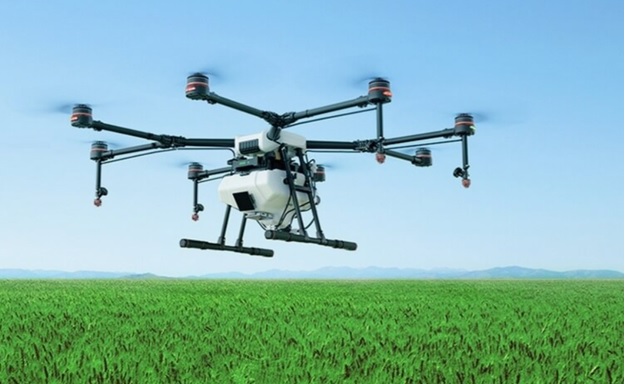Water is one of the most precious resources in agriculture. Farmers depend on it to grow healthy crops and sustain their livelihoods. However, managing water efficiently has always been a challenge. With climate change, unpredictable rainfall, and increasing water scarcity, this challenge has become even more critical. Fortunately, modern technology offers a solution called agriculture drones. These drones are transforming the way farmers manage water, helping them improve irrigation efficiency and better manage water resources.
Here, we will explain how drones are used in agriculture to save water, improve irrigation, and promote sustainable farming practices.
What Are Agriculture Drones?
Agriculture drones are amazing aerial vehicles (UAVs) specifically designed for farming purposes. They are equipped with cameras, sensors, and software that allow farmers to monitor and analyze their fields from the air. These drones can fly over large areas of farmland, collecting detailed data on soil conditions, crop health, and water needs.
Research has shown that using drones in agriculture can improve water use efficiency. According to a study by the American Society of Agricultural and Biological Engineers, drones equipped with multispectral sensors can detect water stress in crops before it is visible to the naked eye. This early detection allows farmers to address water shortages before they harm crop yields.
Additionally, a study published in the journal Remote Sensing found that drones can improve irrigation scheduling by up to 30%, leading to significant water savings and improved crop growth. This demonstrates the potential of drones to make farming more sustainable and efficient.
How Do Drones Improve Irrigation Efficiency?
Irrigation efficiency refers to how well water is used to grow crops without wastage. Many traditional irrigation methods, like flood irrigation or sprinklers, can waste a lot of water. Drones can help farmers make better decisions about how and when to water their crops, saving water and increasing yields.
Monitoring Soil Moisture Levels
One of the main ways drones improve irrigation efficiency is by monitoring soil moisture levels. Drones like DJI Mavic 3 Thermal equipped with infrared and multispectral sensors can detect moisture levels in different parts of a field. This information allows farmers to see which areas need more water and which areas already have enough.
For example, if one part of the field is dry while another is wet, the farmer can adjust irrigation accordingly. This precision means that water is only used where it is needed, reducing waste and ensuring that crops get the right amount of water.
Identifying Irrigation Leaks
Another way drones help with irrigation is by identifying leaks in irrigation systems. Leaks can waste large amounts of water, but they are often hard to spot on large farms. Drones can fly over the farm and quickly identify any areas where water is leaking or pooling. Farmers can then fix these issues right away, preventing further water loss.
Optimizing Irrigation Scheduling
Drones can also help farmers optimize their irrigation schedules. By analyzing data collected from the field, farmers can determine the best times to irrigate their crops. For instance, they might find that watering early in the morning or late in the evening is more effective because less water evaporates during these cooler times of the day.
Using drones to create precise irrigation schedules ensures that water is used efficiently, and crops receive the right amount at the right time. This not only saves water but also improves crop health and yields.

How Drones Help with Water Resource Management
Beyond irrigation efficiency, drones also play an important role in water resource management. This means managing water sources, such as rivers, lakes, and groundwater, to ensure long-term sustainability. Here is how:
Mapping Water Sources
Drones can be used to create detailed maps of water sources on and around a farm. These maps help farmers understand where their water is coming from and how much they have available. Drones can even be used to monitor the water levels in reservoirs or ponds, allowing farmers to plan their irrigation based on the available water supply.
Analyzing Drainage Systems
Good drainage is essential for preventing waterlogging, which can damage crops. Drones can help farmers identify areas where water is not draining properly. By mapping drainage patterns, farmers can see where water tends to collect and take steps to improve drainage. This helps make sure that water is being used effectively and reduces the risk of crop damage from too much water.
Supporting Sustainable Water Use
Sustainable water use is becoming increasingly important as water resources become scarcer. Drones can help farmers use water more sustainably by providing detailed data on how much water their crops need and where it should be applied. This reduces the risk of overwatering and ensures that water is being used responsibly. By conserving water, farmers can help protect local water supplies and contribute to the long-term health of their ecosystems.
Challenges of Using Drones in Agriculture
While agriculture drones offer many benefits, there are also some challenges to consider. For one, drones can be expensive to purchase and maintain. Farmers may need to invest in training to use the technology effectively. Additionally, drones are subject to regulations, and farmers must ensure they are using them legally and safely.
Another challenge is that drones may not be as effective in very small or very large fields. In small fields, the cost of using a drone might outweigh the benefits. In very large fields, drones may struggle to cover the entire area efficiently. However, as drone technology improves, these challenges may become less.
Conclusion
Agriculture drones are revolutionizing irrigation efficiency and water resource management. By providing farmers with precise data on soil moisture, water needs, and irrigation system health, drones help ensure that water is used efficiently and sustainably. This not only helps farmers save water but also improves crop yields and supports sustainable farming practices.
As drone technology continues to advance, we can expect even more improvements in water management and irrigation efficiency in the future.



